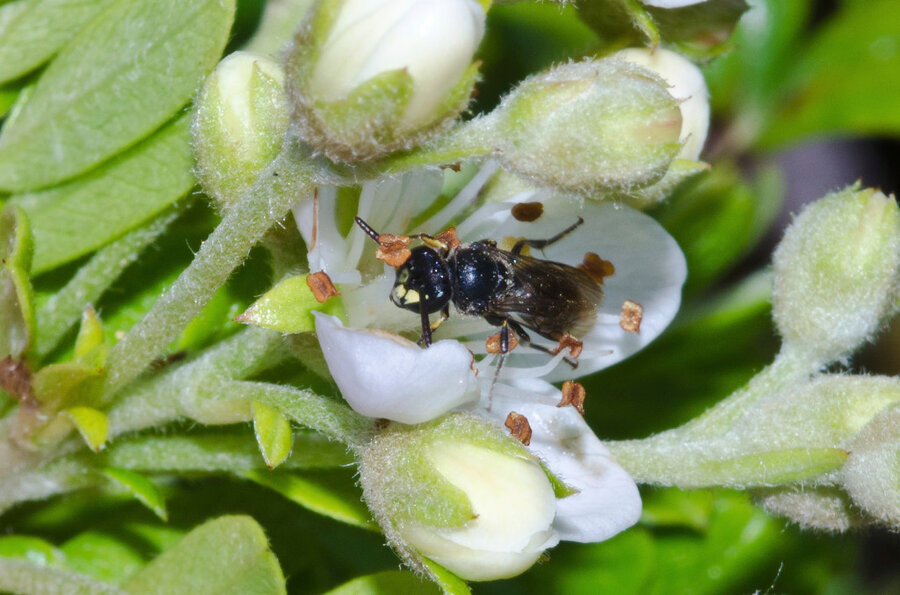Hawaii's bees join endangered species list, but hope remains
Loading...
Federal authorities added the first bees to the endangered species list Friday, seeking a way to protect several vital pollinators who ensure the survival of many local plants and play an essential role in preserving the food chain.
The listing includes seven types of yellow-faced bees native to Hawaii that help to pollinate some of the state’s endangered plants. While human development and interaction with the bees and their habitat has played a destructive role, other insects, including invasive bees from India and ants that aren’t native to Hawaii, have had a negative impact on the bees.
The announcement, which comes just after certain Midwestern bees were considered for protection, may cause initial alarm, but scientists say that it’s not too late to save the species and that putting protective measures in place could have great benefits for the bees.
"A lot of people think of Hawaii as a lost cause because we have so many invasive species," says Cynthia King, an entomologist with Hawaii's Division of Forestry and Wildlife, told National Geographic, but "we're really well positioned right now to make headway for the bee."
Once the most populous insect species in Hawaii, yellow-faced bees have seen a sharp decline in their numbers over the past century. Humans are to blame for destroying bee habitats and using cropdusting that can wipe out large populations of the insects, but in Hawaii in particular, nonnative species have inflicted their own harm.
Invasive bees originally from India have settled in where the yellow-faced bees once thrived, creating competition for plants and taking over nesting areas, National Geographic reported. They’ve also had to battle “alien ants,” which feed on the larvae from yellow-faced bees’ nests.
Authorities say the categorization will allow them to implement recovery programs, gain important funding, and counteract the effects of outside sources. The Fish and Wildlife service will also have a say in any interaction between federal agencies and the species.
"As an animal, it can't be taken or harmed or killed by individuals," Gregory Koob, conservation and restoration team manager for the Fish and Wildlife Service in Honolulu, told the Associated Press. "Any research that is done needs a permit from Fish and Wildlife Service unless it's done by a state agency."
The bees’ uncertain fate has also spurred researchers to seek out innovative solutions that could help to restore their population.
Jason Graham, an entomologist at the University of Hawaii, designed an artificial nest that could protect bees from ants. He found that the bees often build nests in the holes of coral rocks or stems of plants, where they lay eggs and seal the nests. To mimic this, he told National Geographic that he’s created wooden blocks with pre-drilled holes and covered them with a sticky substance that will trap any ants who try to crawl into the nests.
The artificial nests could also be placed in areas where the bees’ populations have dwindled the most, serving as a way to reintroduce them to areas where they’re most needed to support the local ecosystem.
"Those plants are not only food and nesting habitat for the bees, but they also provide habitat for other animals," Mr. Koob said. "It's the web of life."
Information from the Associated Press was used in this report.






